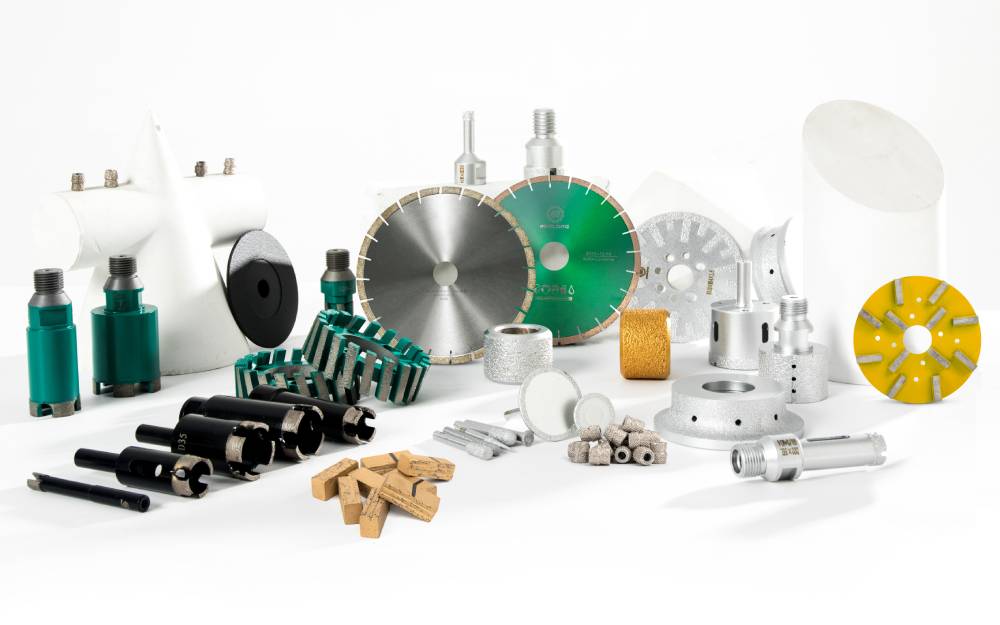The production part of the diamond segment is mainly divided into five parts: material preparation, mixing, pressing, sintering and post-processing.
The specific steps of the diamond segment manufacturing process:
1. Material preparation: The material preparation process is a very important part of the diamond segment production process. First of all, before preparing the material, it is necessary to adjust the formula of the product selected by the customer as the cutting object, especially for some customers with special needs, such as the cutting is very hard, at this time the carcass material segment needs to be hardened. The advantage of this is that the segment can be used for a longer time.
The adjusted formula has the corresponding material weight. According to the number of segments to be produced, the total weight of various metal materials and diamond powder can be calculated. If the quantity is too large, it can be produced in batches. Bring all the materials into the warehouse After the media has been brought out, the preparation process is complete. Although the preparation process is simple, the weight of the material must be very accurate. Otherwise, once the material ratio is incorrect, such a segment will definitely be unusable, resulting in waste.

2. Mixing: Weigh the prepared powder and diamond separately, put them in a 3D mixer, and mix the materials. Over time, when these ingredients are thoroughly mixed, the mixing process is complete.
The mixing process is very error prone. If the mixing time is too long, the longer the powder is in contact with the air and the faster the oxidation, the more unstable the segment will be; the insufficient mixing time will result in insufficient mixing of the powder, especially for diamonds. Some segments are stacked, and in some locations, the diamond concentration is too low, which affects the quality of the later segments. So a stirring time of 1-2 hours is relatively normal.
3. Tableting: After the raw materials are fully mixed, the powdered raw materials need to be compressed, that is, the powder is subjected to high pressure to form nodules. Since this process is completed at about 20 degrees Celsius at room temperature, this process is also called cold pressing.
After cold pressing, the segment is weighed to cut out materials of inappropriate weight, and then press again. The final cold briquette has the same weight, which means that the material mixing of the segment is more successful. , Otherwise, if the cutting times are too many, it means there is a problem with the powder mixing process.
Put the cold pressed sheet into the graphite grinding tool. If it is a sandwich segment, a metal powder barrier of iron sheet or non-working layer will be placed in the middle of the iron sheet, and then the mold will be locked, waiting for the next production process. arrive.
4. Sintering: This process is mainly completed by a sintering machine. Through the rapid rise of high temperature and high pressure, the metal powder melts rapidly. After the liquid metal powder melts, the molecules begin to fuse. When cooling, the metal agglomerates and the diamond powder forms a very strong stress, thereby fixing the diamond powder.
After the sintering process is completed, the segment needs to be cooled at room temperature. After cooling, take out the mold and make the segment.
5. Post-processing: When the segment is taken out of the mold, the appearance is ugly, so it is necessary to stir the segment to make the surface of the segment smooth and form a more beautiful appearance.
In terms of color, sandblasting is required to make the surface of the segment show a more natural and beautiful metallic color. Finally, the bottom and edges are sharpened according to the customer’s requirements, so that the customer can directly weld after receiving the segment, reducing the trouble of trimming.
 WANLONG
WANLONG
